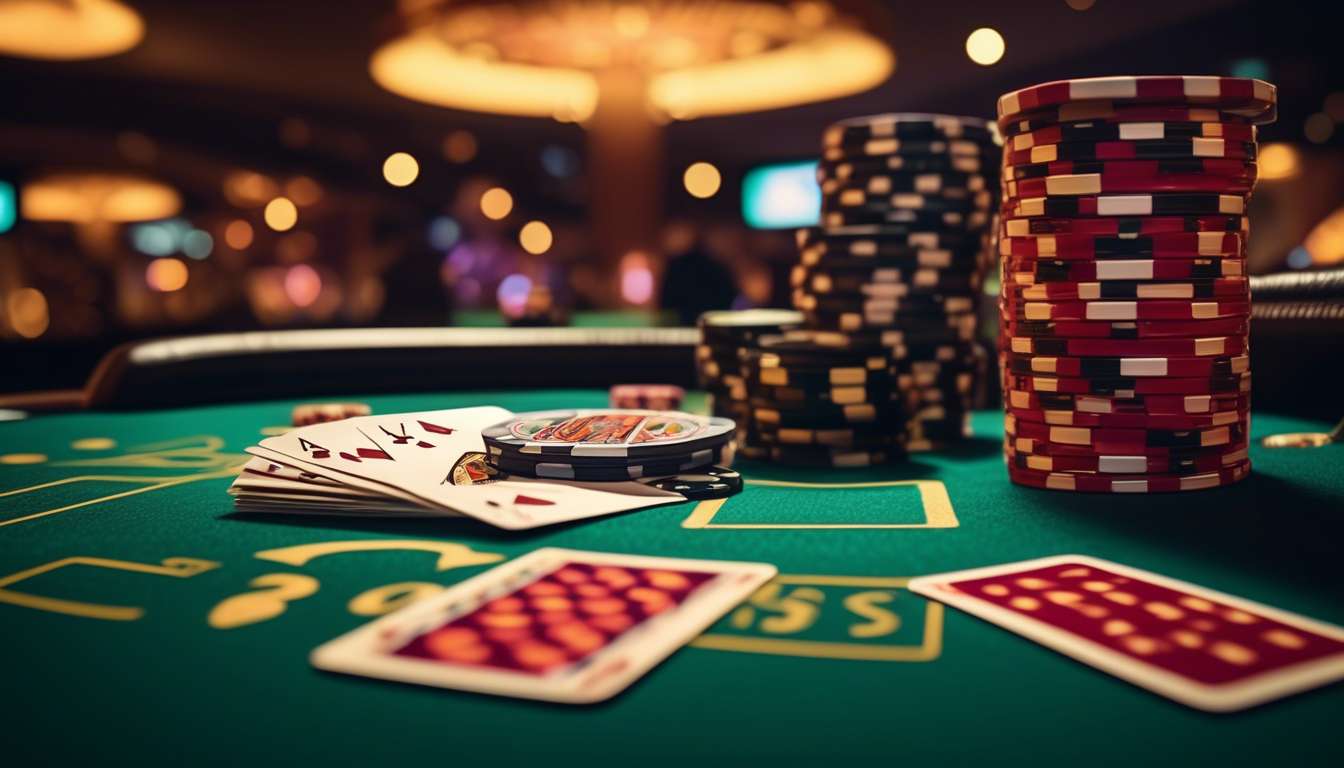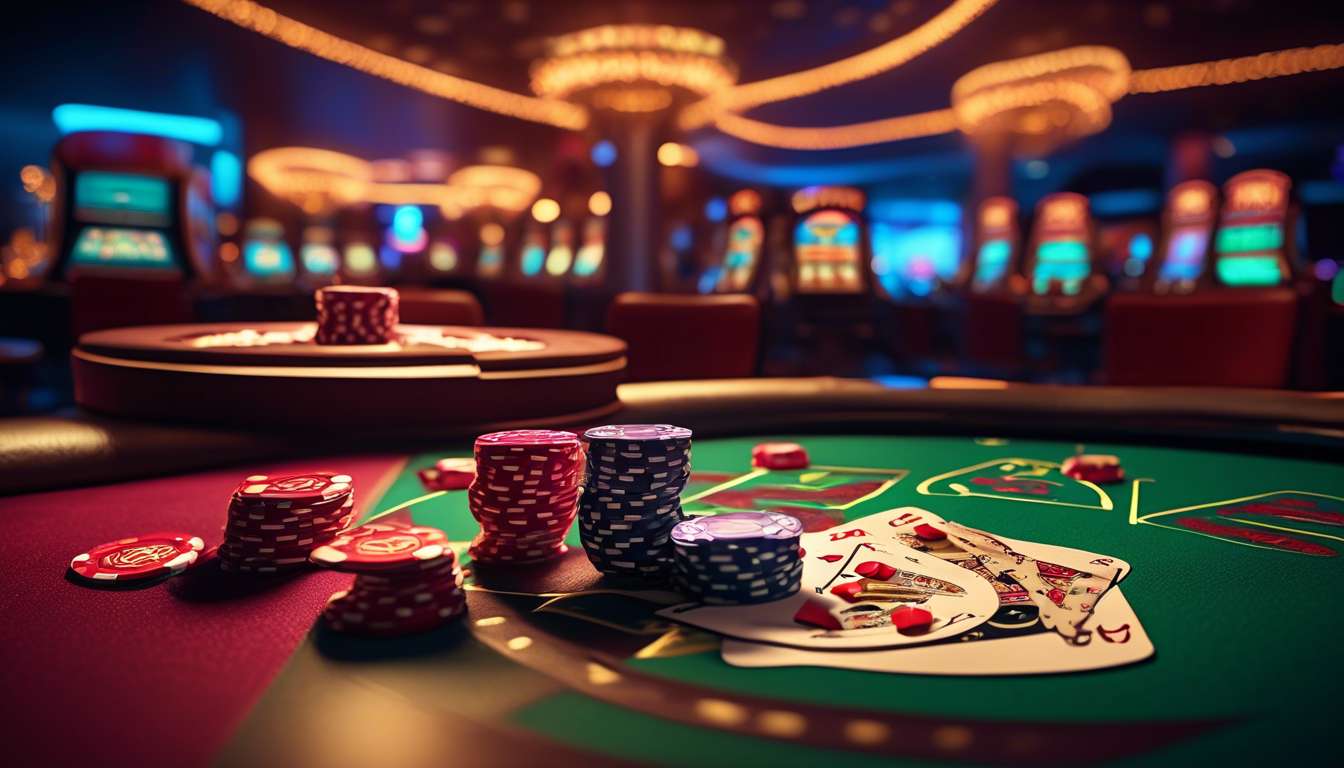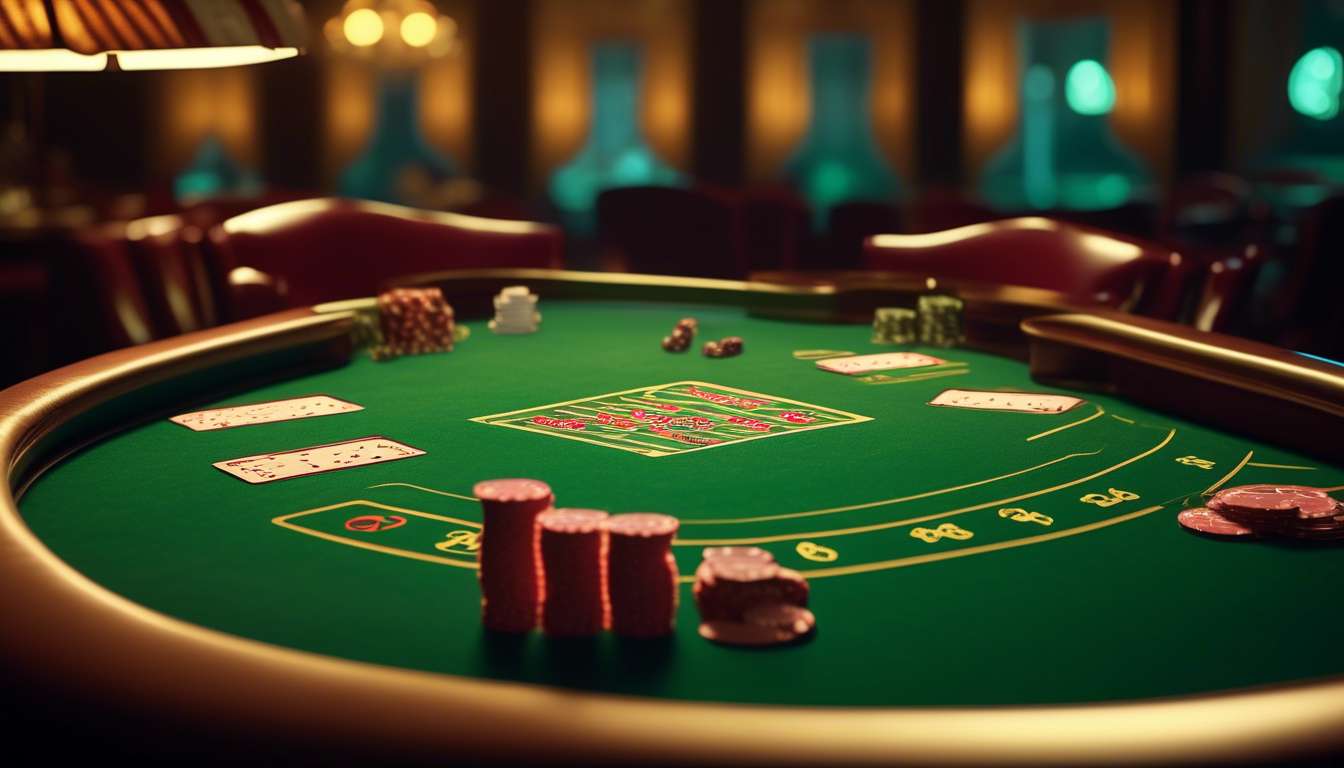In the world of poker, bluffing is an art form that players must master to elevate their game to the next level. It’s not just about the cards we hold, but the story we tell at the table.
Together, we navigate the intricate dance of deception, where a well-timed bluff can turn the tide in our favor. Understanding when and how to bluff effectively is crucial, as it requires a keen sense of timing, observation, and psychology.
We’ve all been there, sitting across from opponents, trying to:
- Decipher their tells
- Mask our own intentions
As we delve into the strategies of bluffing, we’ll explore the subtle cues and signals that indicate the perfect moment to execute a bluff.
By honing this skill, we not only enhance our gameplay but also gain deeper insights into human behavior, making us formidable opponents in the ever-competitive arena of poker.
The Art of Bluffing in Poker
Bluffing in poker is a crucial skill that can turn the tide of a game in our favor by making opponents question their own strategies. As part of our poker community, we know that mastering this art can elevate us from mere players to formidable contenders.
Our collective understanding of bluffing involves more than just bold moves; it requires a keen sense of strategy and awareness.
- We must recognize when to employ our bluffs for maximum impact.
- It’s not about frequent deception but rather choosing the right moments to challenge our opponents’ perceptions.
Together, we refine our strategy by observing patterns, both in our play and others’, and integrating those insights into our gameplay.
Timing is an essential component of bluffing, ensuring our actions coincide with opportunities to disrupt the opponent’s thought process.
In our shared pursuit of excellence, we focus on developing our bluffing skills, which helps us gain respect and camaraderie among fellow players, creating a sense of unity and belonging at the poker table.
Importance of Timing in Bluffing
Recognizing the precise moment to execute a bluff can dramatically increase our chances of success in poker. Timing is everything, and as part of our poker community, mastering this skill can set us apart.
A well-timed bluff is a powerful strategy that allows us to:
- Manipulate the dynamics of the game
- Keep our opponents on their toes
It’s not just about when to bluff, but also about understanding:
- The overall flow of the game
- Our position at the table
As we navigate through each hand, we must remain vigilant, evaluating the situation and using timing to our advantage. Bluffing too early or too late can jeopardize our strategy, but hitting that sweet spot can sway the game in our favor.
Key steps to effective bluffing include:
- Trusting our instincts
- Making calculated decisions
- Seizing opportunities when they arise
By honing our sense of timing, we strengthen our connection to the game and our fellow players, elevating our collective poker experience.
Reading Opponents’ Behavior
To effectively read our opponents’ behavior, we must keenly observe their betting patterns and body language. This is our shared strategy for enhancing our bluffing game.
By noticing when they hesitate or rush, we can gather insights into their confidence or doubt. Timing is everything, and by understanding their rhythms, we position ourselves to make informed decisions.
In our poker community, we’re not just playing cards; we’re engaging in a social dance where each nod, glance, or twitch tells a story. When an opponent suddenly changes their betting size, it might signal:
- A strong hand
- A desperate bluff
By staying alert, we can discern these subtle hints and adjust our strategy accordingly.
Our collective goal is to become adept at reading these cues, ensuring our bluffs are well-timed and effective. By building this skill together, we strengthen our sense of belonging and improve our chances of success in the competitive world of poker.
Creating a Bluffing Strategy
We need a well-crafted plan to execute bluffs that keep our opponents guessing. Creating this bluffing strategy involves:
- Understanding when to take risks.
- Tailoring our moves to the dynamic flow of the game.
In our poker community, we appreciate the importance of blending strategic bluffs with regular play. By doing so, we’re not only enhancing our gameplay but also building a reputation as unpredictable players.
Timing is everything. We need to choose moments when our opponents are most vulnerable:
- When they show signs of uncertainty.
- When the community cards don’t strongly support their potential hands.
Our strategy should include varying our bluffing frequency, making it hard for others to pin us down.
As we develop this strategy together, let’s focus on adapting to different table dynamics. By doing so, we create a shared sense of mastery, allowing us to bluff confidently while fostering a sense of unity and belonging within our poker circle.
Psychological Aspects of Bluffing
Mastering the Psychological Aspects of Bluffing
To effectively bluff, it is essential to understand both our own mental state and the mindset of our opponents.
Self-awareness:
- Recognize when emotions might betray you.
- Stay calm and collected to maintain strategic focus.
- Understand that your demeanor can influence the success of your bluff.
Timing:
- Know when to strike; timing is as crucial as the bluff itself.
Opponent Analysis:
In poker, each opponent is a unique psychological puzzle. By observing their behavior and reactions, you can:
- Gauge their confidence.
- Predict their next moves.
This insight helps in determining when bluffing is most effective.
Shared Experience:
Bluffing involves creating a shared experience, engaging in a mental dance where players read and react to each other.
Benefits of Honing Psychological Acumen:
- Improve bluffing strategy.
- Deepen connections with fellow players.
- Foster a sense of camaraderie and understanding.
By mastering these psychological elements, you can enhance both your game and your relationships at the table.
Bluffing Tells and Signals
Identifying subtle tells and signals can significantly enhance our ability to execute successful bluffs in poker. As a community of poker enthusiasts, understanding these nuances helps us craft a more effective bluffing strategy.
Recognizing opponents’ tells is crucial. Timing is important, but recognizing subtle cues can refine our approach further. These cues may include:
- A slight shift in posture
- An unintentional glance
- A change in betting patterns
These subtle signals can offer insights into the strength or weakness of an opponent’s hand.
Reflecting on our own tells is equally important. Consider the following:
- Are we revealing too much through our body language?
- Do our betting habits betray our intentions?
Being mindful of our own signals allows us to mask our intentions better and make our bluffs more convincing.
By integrating these observations into our gameplay, we strengthen our camaraderie within the poker community. Sharing strategies elevates our collective understanding and success.
Let’s embrace this shared journey, refining our skills and enhancing our enjoyment of the game.
Executing a Successful Bluff
Mastering the art of executing a successful bluff demands a keen understanding of both psychological and strategic elements.
We need to:
- Recognize the importance of reading our opponents
- Anticipate their moves
- Adapt our strategy accordingly
Bluffing isn’t just about throwing chips in and hoping for the best; it’s about timing our actions perfectly to create doubt and uncertainty in their minds.
As a community of poker enthusiasts, we thrive on the thrill of outsmarting our opponents. By carefully choosing when to bluff, we can exploit their weaknesses and capitalize on their uncertainty.
Timing is crucial. We have to gauge the situation, considering factors like:
- The size of the pot
- Our position at the table
- Our opponents’ tendencies
Our shared goal is to make our bluff believable.
By maintaining a consistent demeanor and making calculated decisions, we can turn the tide of the game in our favor.
Together, let’s embrace the challenge and sharpen our bluffing skills for success.
Bluffing Dos and Don’ts
Observing Opponents
Understanding opponents’ habits and tendencies provides insight into when a bluff might succeed.
Timing
Timing is crucial. Choose moments to bluff when your hand is either very strong or very weak to capitalize on opponents’ uncertainty.
Consistency in Betting Patterns
- Maintain consistency in betting patterns to avoid alerting others to bluffing tactics.
- Avoid sudden changes in your betting style.
Avoid Overusing the Bluff
- Do not rely too heavily on bluffing.
- Seasoned players will catch on if you bluff too often.
- Aim for a balanced mix of bluffs and genuine plays.
Staying Calm
- Remain calm and collected.
- Avoid showing signs of nervousness, as this can reveal your intentions.
Adapting Strategies
- Prioritize adapting strategies based on the game dynamics and the players involved.
- Staying flexible helps keep you in the game longer and fosters a sense of belonging with fellow players.
By following these essential dos and don’ts, you can enhance your bluffing game and improve your overall poker strategy.
Conclusion
In conclusion, mastering the art of bluffing in poker is a skill that can greatly enhance your gameplay.
By understanding the importance of timing, reading opponents’ behavior, and creating a strategic approach to bluffing, you can effectively deceive your opponents and increase your chances of winning.
Key aspects to focus on include:
- Paying attention to psychological cues.
- Avoiding common bluffing mistakes.
- Being prepared to execute a successful bluff when the opportunity arises.
With practice and patience, you can become a formidable bluffing player at the poker table.




